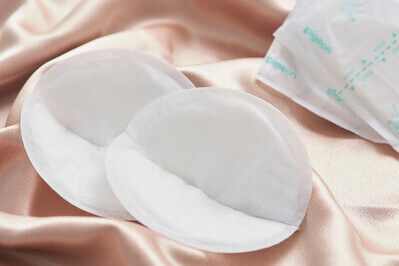
Breast milk is the best food for babies as it is easy to digest and provides all the nutrition a baby requires during each stage of its growth. It helps the babies to build immunity and lessens their risk of infant diabetes and pediatric cancer. The process of breastfeeding is equally advantageous for the mother since it helps them to lose weight, improves their cognitive faculties and reduces the risk of breast and ovarian cancer. In addition to this, breastfeeding helps the mother and baby to develop a lasting bond.
Breastfeeding in the right way is a skill in itself. Improper latching leads to insufficient feed leaving the baby hungry and cranky. When the milk in the breast is not expressed adequately, it can lead to breast milk leakage and the mother can experience pain due to breast engorgement. In this article, we discuss the right way to breastfeed and express milk and about caring for the breasts to keep them free from infection.
If you are a new mother or are facing a challenge in breastfeeding a baby, it is best to begin after consulting a lactation expert or maternity nurse. This can help you to understand how to position the baby correctly and ensure that the baby is latching in the right manner.
It is recommended to provide skin-on-skin contact while breastfeeding, whenever possible. After seating yourself in a comfortable position, hold the baby’s head with one hand and cradle the baby close to the breast. With the other hand, support your breast and coax the baby’s lips open with your nipple. The baby should open its mouth wide and the areola (dark area around the nipple) should be completely inside the baby’s mouth. Check for a rhythmic sucking pattern while your baby is feeding. Feed from both breasts equally throughout the day.
- The baby may be feeding more frequently in the first few weeks but the quantity of breast milk consumed during each feed will be less since his / her tummy is very small and just beginning to develop. If the breasts remain full (or nearly full) for long periods of time, it can lead to breast engorgement or mastitis which is painful for the mother. The solution to this is to hand express the milk, pump the breast milk using an electric or manual breast pump, or use a breast care pump to fully extract the remaining breast milk. By emptying the breasts of the expressed milk, the breasts are stimulated to produce more milk.
- Some mothers have inverted nipples and this prevents the babies from latching on easily. By using a nipple puller, it is possible to draw out inverted or engorged nipples and facilitate smoother breastfeeding.
- Incorrect latching may cause the mother’s nipples to become sore or cracked. A nipple shield with a natural fit and wide contact surface can enable the mother to continue breastfeeding comfortably.
- The mother may experience breast leakage when the breasts are not full due to triggers like hearing a baby cry or thinking about her baby. Using a milk saver pump can help breastfeeding mothers who experience this Milk Ejection Reflex. It is also advisable to wear breast pads inside a well-fitting bra to keep your nipples clean and dry. The PIGEON breast pads come with a quilted honeycomb lining that can contain very heavy leaks.
When your baby breastfeeds, the milk in the breasts is reduced. This prompts the breasts to produce more milk. The supply of breast milk is directly related to the demand for it. When your breasts are not emptied completely, it may cause painful lumps or plugged milk ducts, or engorgement. Using a breast pump can help you to empty your breasts, while you are away from the baby or if the baby has not completely drained the milk during feeding. PIGEON’s breast pump range includes manual and electric breast pumps. PIGEON Manual Breast Pumps are simple and uncomplicated to use and come with easy-express handles to reduce hand fatigue during manual pumping. PIGEON Electric Breast Pumps have taken both convenience and comfort into consideration. The Two-Phase Technology with Stimulation and Expression modes help to massage the nipples to improve flow of breast milk and to comfortably pump milk at 7 different suction levels.
The breast milk that has been expressed must be stored correctly so that it is usable later. Storage guidelines for breast milk depend on the duration for which it is to be stored. Storing breast milk in the fridge is recommended if the breast milk will be consumed by the baby within 24 hours of pumping. The milk can be kept fresh in breast milk storage bottles. PIGEON breast milk storage bottles are compatible with PIGEON breast pumps. When breast milk needs to be stored for longer periods of time, it can be frozen in breast milk storage bags. PIGEON breast milk storage bags come with leak-proof double zipper seal and are hygienic and safe to use.
When you gradually reduce the frequency and quantity of feed over a period, the breasts will adjust accordingly. You may not need to provide any specific care to the breasts. However, if you decide to stop breastfeeding suddenly, your breasts do not get the time to adjust their supply of breast milk. To avoid engorgement, it is important to express some breast milk with a breast care pump so that the breast is comfortable and does not experience pain. However, take care not to pump frequently or in larger quantities because that stimulation would make the breasts produce more milk. It is also recommended that you wear a bra that is supportive but not tight because the breasts could feel constricted when full.


